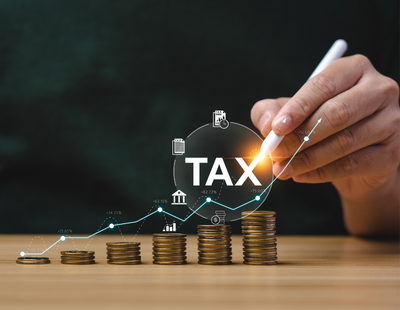There's speculation that Chancellor Rachel Reeves will use changes to Capital Gains Tax to help fill the hole in the public finances she's identified as being created by the last government – possibly by equalising the rates of income tax and CGT.
The follows 2022/2023 being a record year for CGT, with receipts at £16.929 billion - a four-fold increase in 10 years.
The numbers of people paying CGT rose by 50% to 394,000 over five years to 2021/2022 and, of course, the the annual tax-free allowance was cut from £12,300 in 2022/23 to £3,000 in the current tax year.
Sarah Coles, head of personal finance at business consultancy Hargreaves Lansdown, says: "Capital Gains Tax speculation has intensified. As Rachel Reeves peers into the hole in the public finances and is set to reveal just how deep it goes, rumours are swirling as to whether CGT changes could be used to generate extra cash to help fill it.
"One of the suggestions doing the rounds is that capital gains tax rates could rise to match income tax. It was one of the things the Office for Tax Simplification explored in 2020. This would see a shocking hike for UK investors.
"As the OTS highlighted in 2020, in the long term it runs the risk of people hoarding their profits until they die. This would mean, for example, buy-to-let investors refusing to part with properties they don’t really want in an effort to avoid CGT, while first time buyers struggle to get on to the property ladder.
"The tax system should be encouraging and rewarding long-term investing. This has been absent from the CGT system since taper relief was abolished in April 2008. Right now, investors face the double-whammy of a system that taxes investments that are simply keeping pace with inflation and allows for far lower gains to be realised tax-free each year. If the rates do end up rising, it would add insult to injury. We’d urge the Chancellor to reintroduce incentives that reward long-term investing."
|
Shares
|
Current
|
Future
|
Increase
|
|
Basic rate taxpayer
|
10%
|
20%
|
100.0%
|
|
Higher rate taxpayer
|
20%
|
40%
|
100.0%
|
|
Additional rate taxpayer
|
20%
|
45%
|
125.0%
|
|
|
|
|
|
|
Second residential property
|
Current
|
Future
|
Increase
|
|
Basic rate taxpayer
|
18%
|
20%
|
11.1%
|
|
Higher rate taxpayer
|
24%
|
40%
|
66.7%
|
|
Additional rate taxpayer
|
24%
|
45%
|
87.5%
|
How CGT works
CGT is charged on the profits made when certain assets are sold, or transferred to someone who isn’t a spouse or civil partner. If all gains in a tax year fall within the annual CGT allowance (£3,000) there is no tax to pay.
When you make gains above the annual allowance, CGT on stocks and shares can be charged at either 10% or 20% depending on an investor’s other taxable income. Provided combined taxable income and gains don’t exceed £50,270, 10% CGT on gains above the annual allowance is paid. Where gains and taxable income exceed £50,270, 20% CGT is paid.
If gains fall into two bands, taking the investor from the basic rate into the higher rate tax band, capital gains tax is paid at 10% on the amount which falls in the basic rate band and at 20% on the amount which falls in the higher rate band.
Where CGT is paid on property, the rates rise to 18% and 24%.
Surging CGT
Coles says it’s a common myth that ‘no-one pays CGT’. It is true that most of this tax is paid by a relatively small number of people, but the rapid increase in the amount of CGT paid, the cuts to the annual tax-free allowance, and the numbers paying this tax show it’s something all investors need to consider.
The single-year surge in CGT will owe something to the fact that people will have taken gains early, to take advantage of the £12,300 allowance while it lasted. We may also have seen an increase in sales of second properties – which is now one of the least tax efficient ways to invest.
It’s also why the monthly data shows CGT actually fell in 2023/24 to £15.025 billion. However, the current tax year is likely to show CGT back on an upwards trend – powered ever-higher by the additional cut in the tax-free allowance. You can see the impact that rule-changes have from the surge in 2008/9, following wholesale changes including the abolition of taper relief.

We're excited to announce that we're working on building a shiny new website for readers of Landlord Today! As part of this process, commenting on articles will be temporarily disabled. We look forward to sharing our new and improved Landlord Today website with you shortly!








.png)

(1).png)







.jpg)






%20(002).png)




